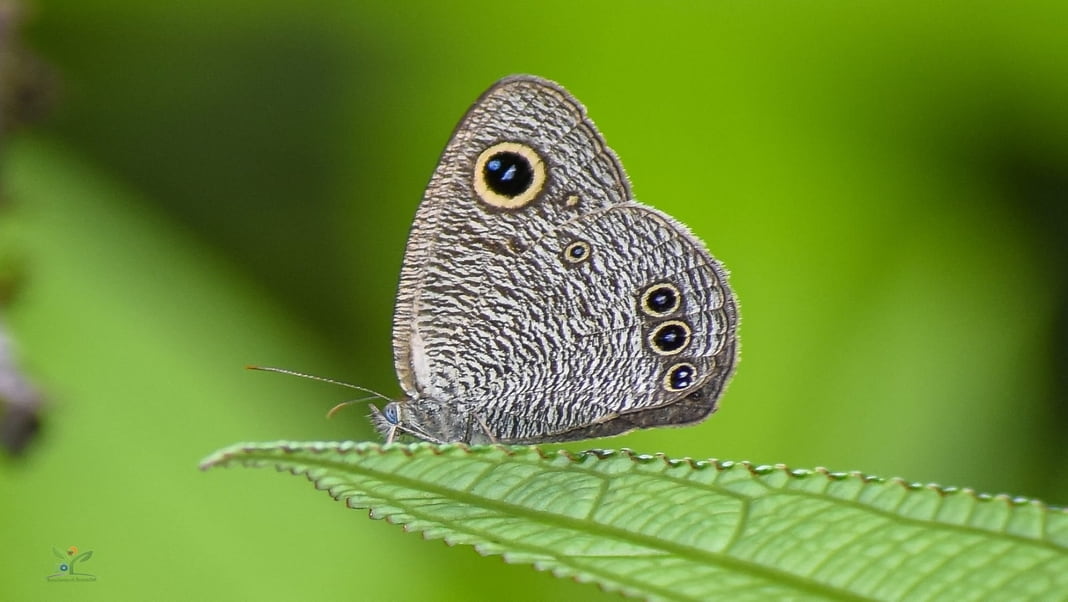Guwahati, Aug 2: The rediscovery of a butterfly after 61 years in Namdapha National Park has emphasised the significance of Namdapha National Park as a crucial protected area for various species in Northeast India.
The survey was conducted in the Miao range of Namdapha National Park during 2018–2019 to document butterfly diversity. During this survey, a butterfly was observed near Miao-Vijaynagar Road and photographed.
The survey was conducted by Roshan Upadhaya, Monsoon Jyoti Gogoi, Renu Gogoi and Rezina Ahmed.

“The species identification was confirmed with the help of literature by Evans. The authors realized this species had not been reported for approximately 61 years since its last original description. Moreover, little is known about its current distribution or populations” the study said. The butterfly identified was Ypthima cantliei the Great Four-ring, a species of Satyrinae butterfly found in India.
“A review of literature on Indian butterflies showed no recent record of Ypthima cantliei in Arunachal Pradesh. However, the species was earlier reported in 1957 from Margherita in Upper Assam, hence we can conclude that this species is a new addition to the butterfly fauna of Arunachal Pradesh and a rediscovery in India” the researchers said in the study.

Namdapha National Park is a large protected area located in Changlang district in the northeastern state of Arunachal Pradesh. The park is known for its diverse flora and fauna and is situated on the international border between India and Myanmar. It is renowned for its wide variety of butterflies due to factors like tropical climate, relative humidity, annual precipitation, and lush green vegetation.
The family Nymphalidae includes around 6,000 species of butterflies, with Ypthima being a rich genus in this family. Of the 35 species recorded in India, 23 are reported from Northeast India. The highest Ypthima diversity is in China, particularly in the Yunnan and Sichuan provinces, and in adjacent countries such as northeastern India, Nepal, Bhutan, and Burma (now Myanmar).

Tropical areas, which are natural habitats for various animals, generally report the highest percentage of butterflies. The protected landscape of Namdapha National Park, encompassing dense tropical jungles, is invaluable to the thousands of species living there. “Thus, the Eastern Himalaya, as a tropical ecosystem, represent the richest butterfly diversity,” the study said.
The general appearance of this species includes dull brown-grey wings with three yellow-ringed single-eye spots (ocelli) on their hind wings and a large bi-pupilled apical ocellus obscurely ringed with yellow on the forewing above. The butterfly is larger in size, and the forewing upper pupil is placed nearer to the apex (length from base to apex 21 mm) compared to other species of the genus Ypthima.

The preferred vegetation of the butterfly includes evergreen forests, plains, and roadsides. During observation, the species was perched on a shrub near the roadside. Its preferred food is nectar.
“Further work is needed to understand the morphology, host plant associations, and conservation of this delicate insect in the future,” the researchers said.
Also Read: Sikkim wooing investors
Watch
Find latest news from every corner of Northeast India at hubnetwork.in, your online source for breaking news, video coverage.
Also, Follow us on-
Twitter-twitter.com/nemediahub
Youtube channel- www.youtube.com/@NortheastMediaHub2020
Instagram- www.instagram.com/ne_media_hub





